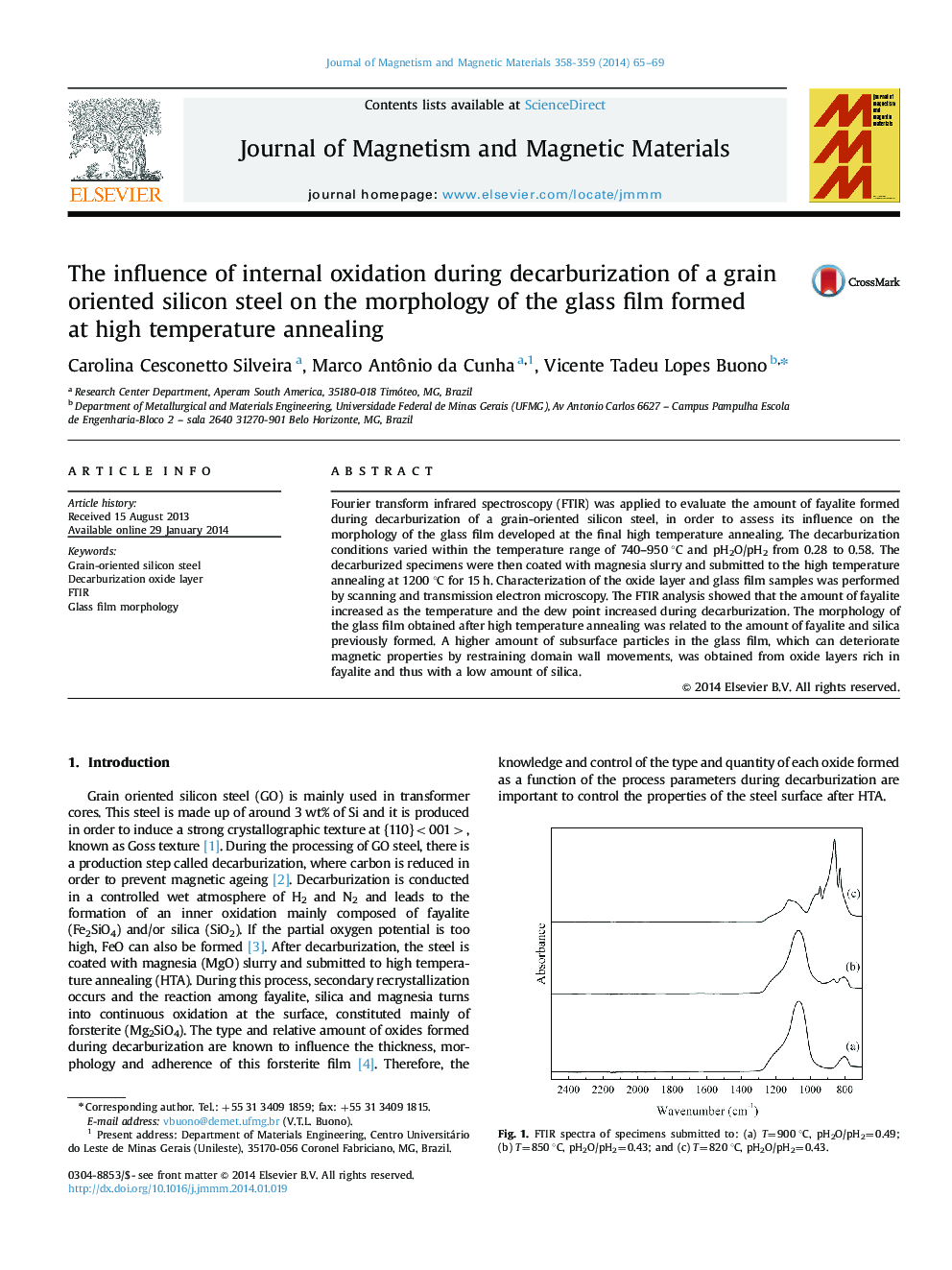| Article ID | Journal | Published Year | Pages | File Type |
|---|---|---|---|---|
| 1799852 | Journal of Magnetism and Magnetic Materials | 2014 | 5 Pages |
•A characterization method is proposed to study fayalite and silica in GO steels.•The amount of fayalite is correlated with decarburization temperature and the dew point.•Higher amount of fayalite give rise to more subsurface particles in the glass film.
Fourier transform infrared spectroscopy (FTIR) was applied to evaluate the amount of fayalite formed during decarburization of a grain-oriented silicon steel, in order to assess its influence on the morphology of the glass film developed at the final high temperature annealing. The decarburization conditions varied within the temperature range of 740–950 °C and pH2O/pH2 from 0.28 to 0.58. The decarburized specimens were then coated with magnesia slurry and submitted to the high temperature annealing at 1200 °C for 15 h. Characterization of the oxide layer and glass film samples was performed by scanning and transmission electron microscopy. The FTIR analysis showed that the amount of fayalite increased as the temperature and the dew point increased during decarburization. The morphology of the glass film obtained after high temperature annealing was related to the amount of fayalite and silica previously formed. A higher amount of subsurface particles in the glass film, which can deteriorate magnetic properties by restraining domain wall movements, was obtained from oxide layers rich in fayalite and thus with a low amount of silica.
